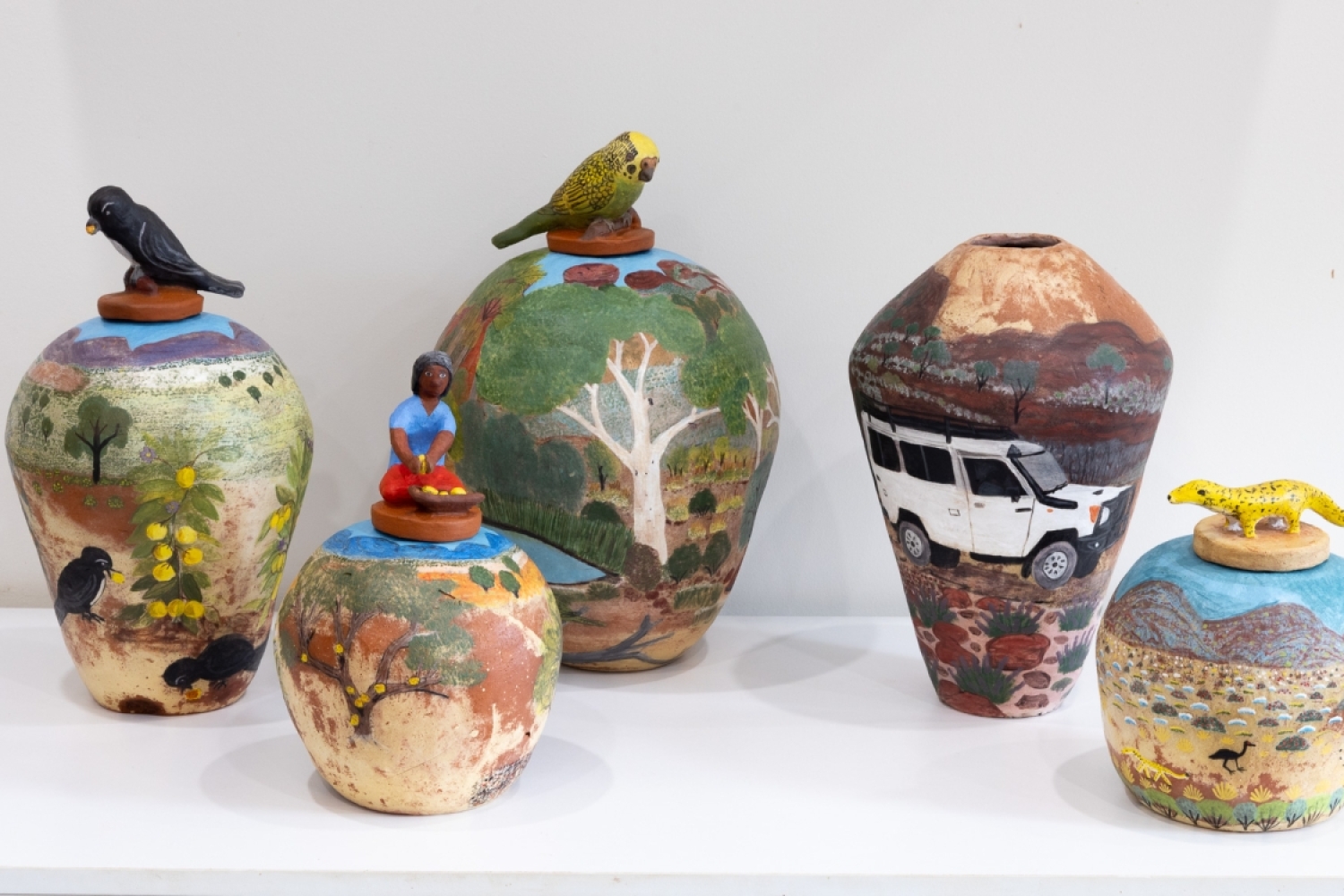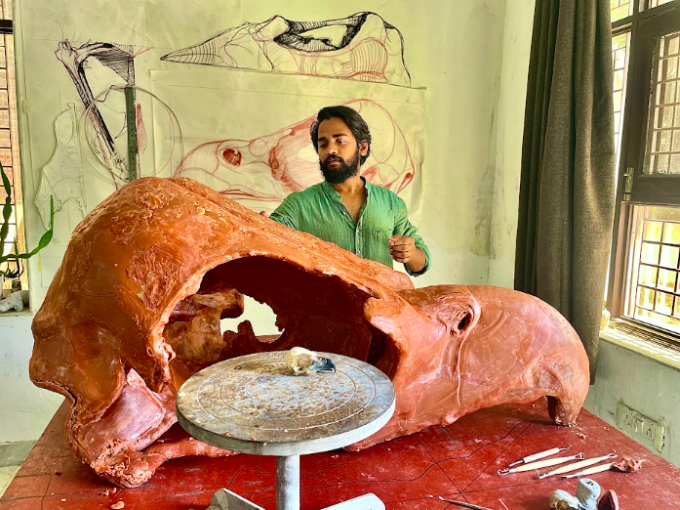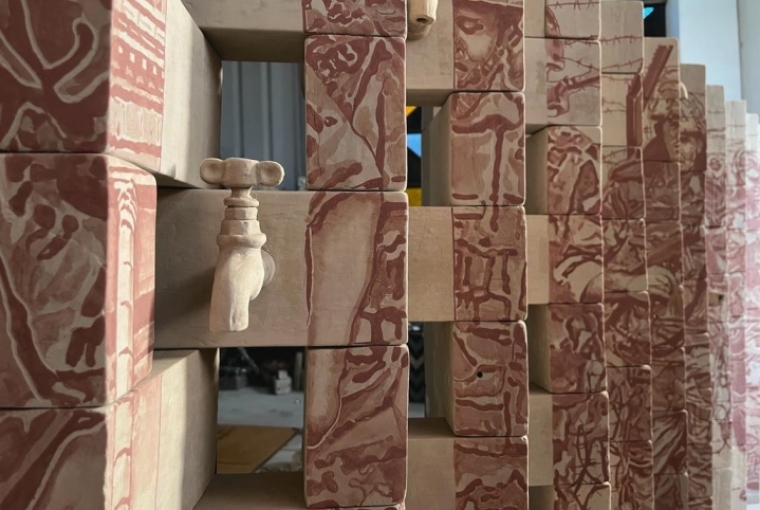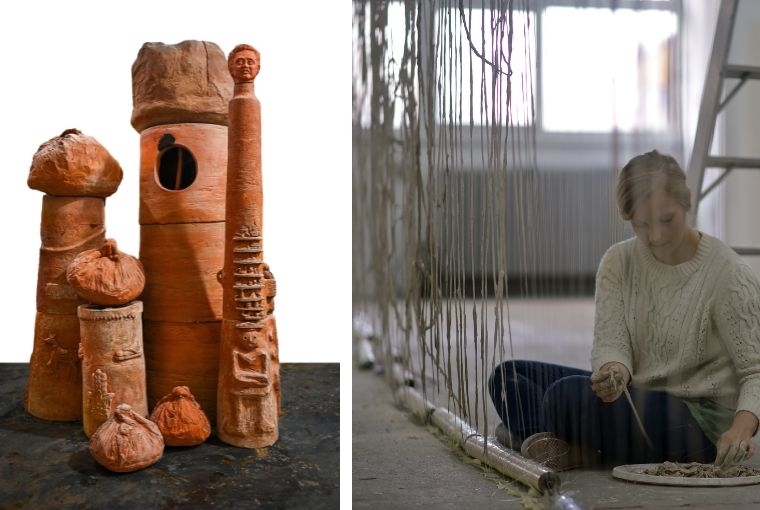
Hayley Coulthard and Rona Robuntja

Hayley Coulthard and Rona Robuntja
The second edition of the Indian Ceramics Triennale "Common Ground" is set to open at Arthshila this week. Happening at a fresh new cultural hub, the Triennale will run until the 31st of March. This over two-month-long celebration of contemporary ceramics will showcase the work of over 60 Indian and international artists from 12 countries, unveiling 34 projects under the theme "Common Ground." The curators elucidate more on this year's edition. The conversation was with Anjani Khanna and Madhvi Subrahmanian. Exceprts below.
What's in store for this year at the Ceramics Triennale?
I think a lot of exciting works. We have object based, experimental works, performance based works with different materials. On each project, you can get multiple layers. And a pretty huge variety with clay being something that's most common. We have about 24 projects in total, and we are also working with over 60 artists. There are a lot of collaborative projects as well. The whole premise of the Triennale has been to think about different, clay-based practices across the country, but also invite, practitioners from across the world that would open up the way we look at ceramics and clay as a medium of art making. So that's what we've tried to do. Each artist has brought in something new to the show. And what to look forward to is these multiple entry points into ceramics practice.

Deepak Kumar
The Triennale is happening after a gap of nearly six years, and it has traveled from Jaipur to Delhi at a fresh cultural hub called Arthshila. What informed that decision?
A lot of it was based on the opportunity. We got into conversation with this absolutely wonderful new art center, a beautiful building that is very inspiring as well. Jaipur is a relatively small town compared to Delhi. And this is in a semi-industrial warehousing area, so it's a totally different context from Jaipur. And it's exciting because you are in the capital, so you are gonna reach a different kind of audience. So it was a plus point. It has been about where we could find opportunities. We aren't really tied to any location particularly.
What was your curatorial process for this year?
It changed from the last time. We continued with the open call, but we opened the open call internationally. We had some Indian artists also by invitation last time but this time everybody is here on the basis of the open call. So we had about over 375 applicants but had spots for only 34 projects from over 60 artists. So, to that extent, the curatorial process was different. The curators were essentially the same but we had our advisors as well, who were involved in to some extent in the curatoriol process.

Asish Chowdhury
Is there a dialogue that you’re trying to start with the Triennale?
I think with every work we want the audience to engage. They bring to their own thought process, their own sensitivity and dialogue with the cause. The artists have really invested a lot of their own thought process. And there's no one thing that should be a takeaway.
When we are trying to articulate our own curatorial thought, it is an experimental approach, which means we too, are a part of the experiment. It's not that we just put it out there with a preconceived idea of what we want people to take away. It's an engagement with the artists, with the audience and ourselves. We want it to be something that we all create together in a way and something we can also change. We took a leap of faith on our part to think that yes, we will get something interesting here even if it's not an idea that hasn’t fully formed yet. It's not guaranteed, but we were willing to take the risk. If you do an open call, there’s usually a jury process and artists submit some work that they've already made. We’re all artists as well and so this is an exciting creative process for us.

Birender Yadav (left) | Kate Roberts (right)
Can you talk a little about picking "Common Ground" as the theme?
Last time, it was "Breaking Ground." We wanted to find common ground especially in these times. We thought about this as the general theme and then put it out for artists to respond. And we had quite an overwhelming response. So obviously, it struck a chord with everybody not just amongst ourselves, but many people around the world.
Words Hansika Lohani
Date 15.01.2024